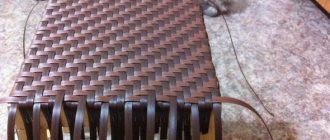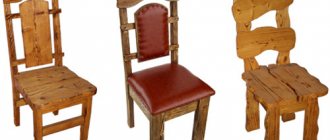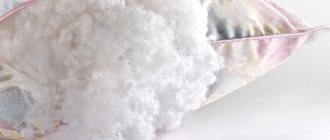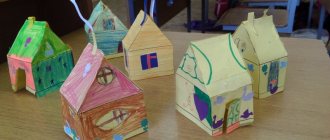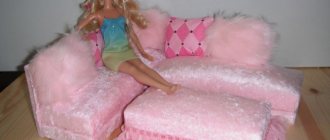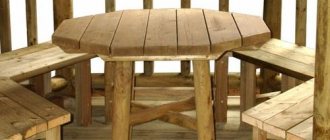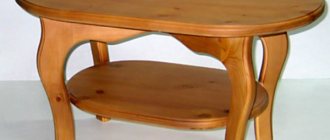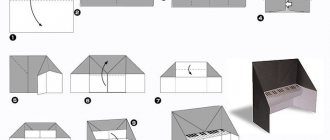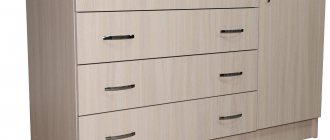Recently, furniture made from natural materials has become increasingly popular. It is beautiful, environmentally friendly, has a special warmth, is durable, does not cause allergic reactions, and creates a special atmosphere of coziness and comfort. Wicker products occupy a special place in the furniture market. But furniture made independently is considered a special chic and source of pride.
It is beautiful, environmentally friendly, has a special warmth, is durable, does not cause allergic reactions, and creates a special atmosphere of coziness and comfort.
The benefits of making furniture with your own hands
Made with your own hands, such furniture has advantages and certain disadvantages. Among the undeniable advantages:
- light weight, allowing you to move it to any place in the room or area of the site;
- does not require special care: it looks elegant and fresh, if you periodically wipe it with a damp cloth or sponge, this simple procedure protects the product from cracking;
- fits perfectly into any interior, adding lightness and sophistication;
- environmentally friendly, not emitting substances harmful to health into the surrounding atmosphere;
- when weaving is done correctly, it is durable and strong;
- complete freedom of imagination for home craftsmen;
- will significantly save the family budget;
- the opportunity to acquire skills that allow you to organize your own small profitable business.
Made with your own hands, such furniture has advantages and certain disadvantages.
Despite the undoubted advantages of wicker furniture, there are also disadvantages that must be taken into account:
- afraid of high humidity: cannot be left outdoors in bad weather;
- At the same time, the scorching sun will also not do any good: the furniture will dry out, warp, and lose its appearance, which will lead to a reduction in service life.
Light weight, allowing you to move it to any place in the room or area of the site.
Choosing the right rod
A high-quality rod for weaving relatively small openwork furniture should have a thin core. Rods with a thick core are useful for making gazebos or fences. Another selection criterion is the size of the willow leaf. The wider the leaf, the worse the vine will bend, and vice versa.
Popular raw materials for making wicker furniture are rattan or tropical vine. The material is very pliable for weaving, as it has increased flexibility, strong bark with soft wood and a hard core. Rattan branches are smooth and have no extra branches. Their length can sometimes reach 300 m.
Deciding on design and construction
Structurally, wicker furniture can be:
- frameless,
- frame.
Fits perfectly into any interior, adding lightness and sophistication.
For a frameless structure, it is enough to use sticks. They perform the function of hard ribs. The difference between frame products is the presence of a metal base; steel rods are used for it. The weaving seems to be “attached” to them. Wooden poles provide stability and rigidity to the wooden structure.
Does not require special care: it looks elegant and fresh if you periodically wipe it with a damp cloth or sponge.
If home craftsmen are taking their first steps in weaving furniture, they should not take on complex products: it will be extremely difficult for an inexperienced craftsman to complete them, which will lead to numerous mistakes and disappointments; you need to start with the simplest ones, which give you the opportunity to master the necessary skills.
In order for the product to be of high quality and durable, you need to properly prepare the raw materials.
The furniture has several types of weaving:
| Type of weaving | Distinctive features |
| Single | Simple weaving is easy to master: each branch alternately braids all the posts of the frame. Usually used as the main method of making wicker items. Gives additional strength and keeps the shape of the product. |
| Openwork | Weaving is used in furniture decoration, adding special chic and originality. It can be used to create waves, corners, ovals, crosses, and diamonds. Requires perseverance, attention, accuracy. Before execution, you need to decide on the ornament, weave several single rows, then choose a decoration method. The most commonly used is straight openwork with stripes of light. A fairly complex type of work that requires significant skills. |
| Combined | This type is a combination of single and openwork weaving in their varieties. The design of wicker products using combined weaving is “aerobatics” and indicates a high level of craftsmanship. |
Environmentally friendly, does not emit substances harmful to health into the surrounding atmosphere.
Rattan weaving. Patterns.
Weaving patterns are varied, but the main ones are:
- Rhombus. It is mainly used for weaving smooth, continuous surfaces.
- Star. More lacy, airy weaving looks beautiful on the side surfaces of chairs, armchairs, and sofas.
- Simple continuous weave. A fairly strong, even weave is used for surfaces under load: seats of chairs, sofas, armchairs, etc.
- Christmas tree. One of the varieties of continuous weaving. The purpose is universal.
Necessary materials
To make furniture from wicker you will need materials. It is worth noting that they can be different, and many are exotic and inaccessible to us: banana leaves, bamboo, water hyacinth, seaweed. But most of the furniture is made from rattan, willow twigs, bird cherry vines, alder, raspberry, and hazel.
Experts say that it is possible to harvest raw materials in the spring.
IMPORTANT! If you decide to use a vine, willow and bird cherry, which are particularly flexible and plastic, are best suited. Bird cherry is especially good in this regard.
When weaving correctly, it is durable and strong.
Excellent decorative elements are colored pillows and blankets of various colors.
Preparation of raw materials for robots
In order for the product to be of high quality and durable, you need to properly prepare the raw materials. Most often these are willow twigs.
- For weaving, you can harvest material that is collected from living trees in the absence of buds; the most suitable time for harvesting is late autumn. You need to make it before the first frost - such raw materials are easy to clean and store dry.
- Experts say that you can prepare raw materials in the spring, but you need to remember that you need to cut the rods before the buds begin to swell; if you are late, green leaves will appear on the new furniture.
- You need to cut the branches at forty degrees - pruning will not harm the tree, and in a year or two new branches will appear.
- You need to conduct a kind of flexibility test. The cut branch must be bent: if it does not break, then the raw material is suitable for the job. Thin vine used for fine binding of products is considered to be of high quality.
- Thicker branches are used to make the frame.
The opportunity to acquire skills that allow you to organize your own small profitable business.
Required Tools
To weave furniture from wicker, you don’t need many tools, but you should have:
- knives and pruners;
- tape measure and measuring tape;
- various templates.
Afraid of high humidity: should not be left outdoors in bad weather.
We must not forget about the armrests, which, however, are made at the request of the master, but serve as an additional element to strengthen the entire structure.
This is the required minimum; with the help of such a set of tools you can weave simple and small-sized products.
The difference between frame products is the presence of a metal base; steel rods are used for it.
Methods for finishing the edge of a product
Wicker weaving (for beginners it is important to practice decorating edges on products of different shapes) is always completed by finishing the edges so that the craft does not fall apart. You can braid the remaining rods, or you can simply bend them inward, hiding the ends of the vine under the weaving of the walls.
At the end of the work, the craft must be carefully inspected. Fold the protruding ends over to the wrong side and cut off. Then polish the product with fine-grained sandpaper and wipe off the crumbs with a soft cloth.
Manufacturing process: technology and manufacturing nuances
In order not to lose interest in weaving furniture and not to spoil a large amount of material, you should not immediately “swing” at large and quite complex products - a sofa or a table. It’s better to start with the simplest “braids”, for example, a chair. It consists of several elements: a lower bench, a seat, a backrest, and armrests. To work, you will need willow sticks with a diameter of up to 30 mm and thin willow twigs.
Wooden poles provide stability and rigidity to the wooden structure.
The beginning of the work is the manufacture of the frame.
ADVICE. When working on a chair, you will need curved parts. To bend the rods, you need to soak them, and when they become soft, remove any irregularities and bend them on a prepared template and let them dry.
You need to cut the branches at forty degrees - pruning will not harm the tree, and in a year or two new branches will appear.
The beginning of the work is the manufacture of the frame. If a craftsman is taking his first steps in weaving furniture, it is better to use the frame of an old chair made of metal or wood to make the work easier.
You need to conduct a kind of flexibility test.
When working on a chair, you will need curved parts.
ATTENTION! We must not forget about the armrests, which, however, are made at the request of the master, but serve as an additional element to strengthen the entire structure.
But most of the furniture is made from rattan, willow twigs, bird cherry vines, alder, raspberry, and hazel.
The procedure for making a chair.
- We make the frame. The frame itself is made of thick, durable sticks and a piece of plywood, which is used as a seat. One pair of sticks will act as the front legs; it should be 15-20 cm shorter than the second.
- The legs are connected with self-tapping screws, the seat is nailed down.
- Also, the curved elements of the chair back and armrests are attached to the frame with self-tapping screws.
- The frame is wrapped with willow ribbons and can be secured with glue for strength.
- The frame is braided using single weaving.
Bird cherry is especially good in this regard.
It’s better to start with the simplest “braids”, for example, a chair.
If desired, the resulting chair is treated with stain.
To make furniture from wicker you will need materials.
Safety precautions when weaving rattan.
- Prepare a work space: a table if you are going to weave small items. Take care of the cleanliness of the surface: remove everything unnecessary so that nothing at hand interferes with the work.
- If you plan to start weaving more bulky items, then you need to find a free space: a room or a garage. Some skeins of rattan for weaving will need to be cut about 15 meters (approximately). Working with such a tape in a cramped room is very inconvenient and unsafe for others.
- Always wear gloves to reduce hand injuries. Rattan is hard.
- It is advisable to protect your eyes with special glasses. Due to its rigidity and long ribbons, it can spring back into the eye.
- It is also necessary to observe safety precautions if you work with a welding machine. Here, even more so, you can’t do without a separate room.
Be very careful, take care of yourself and those around you.
To summarize: taking into account all the nuances, rattan weaving itself will captivate and inspire you.
Many choose this craft as a hobby, and some as a profession.
If you decide to purchase a finished product, you can read the article here: Buy artificial rattan.
Good luck with your choice!
The final stage is decoration
High-quality wicker furniture practically does not need decoration: it is good in itself. If you want to add an element of creativity and “revive” it with bright colors, you can use willow ribbons in weaving, including dyed ones; they will be organically combined in the ornament of the product. Excellent decorative elements are colored pillows and blankets of various colors.
If home craftsmen are taking their first steps in weaving furniture, they should not take on complex products.
Thicker branches are used to make the frame.
